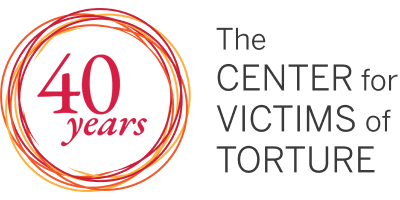In a recent article for Torture Journal, Pam Kriege Santoso, project manager, Partners in Trauma Healing (PATH) Project, and Kristi Rendahl, CVT consultant and assistant professor at Minnesota State University, Mankato, shine a light on a topic that does not often receive the attention it deserves: organizational development.
While much of the torture rehabilitation literature concentrates on clinical interventions and the evaluation of the impact of torture on survivors, fewer pages are devoted to initiatives that improve the performance of organizations. For their article, Pam and Kristi employ case studies from CVT’s PATH project, which collaborates with torture rehabilitation organizations, concentrating on three areas: mental health treatment, program evaluation and organizational development.
“I define organizational development simply as ‘improving organizational effectiveness,’” says Kristi. “It’s a very specific field with few people who work on organizational development in particular. It seemed our responsibility to document this work at this moment in time.”
In the article, Kristi and Pam examine development needs in the field of torture rehabilitation: strategic thinking; staff care policies; clear organizational structure; and financial management systems promoting growth. The authors provide three case studies of organizations which benefitted from collaboration with PATH. In the first case study, the organization’s fundraising expertise was held entirely by the executive director. The second features an organization divided along lines of seniority which was dampening staff morale. And in the third study, an organization struggled to communicate to their donors the importance of funding for clinical supervision and program evaluation.
Using these case studies as examples, Pam and Kristi identify a number of recommendations for rehabilitation sites struggling with organizational development. They emphasize the necessity of creating space for strategic thinking and problem-solving. “Bringing people together to learn more about each other’s work enlightens people to their colleagues’ challenges,” says Pam. “During those conversations when coworkers learn about each other’s motivations, oftentimes barriers that arise can be worked through because you’ve got all the key people together focused on the issue.” Similarly, the article also underlines the implementation of staff care policies that reduce burnout and secondary trauma as essential features of a thriving organization.
Moreover, the authors recommend meaningful investment in program evaluation and developing the capacity of financial systems. It is Pam and Kristi’s hope that executive directors who read this article will bring their organization’s different departments together to ensure that they are in conversation. Clear communication between colleagues contributes greatly to an organization’s resiliency.
“Writing the article inspired me to think about the resilience of organizations – usually, we talk about the resilience of an organization’s clients,” says Kristi. “The work can feel like there are so many problems to address because the organizations are facing so many internal and external constraints. And increasingly I see how incredible it is that organizations continue their work even though there are so many internal and external constraints.”
